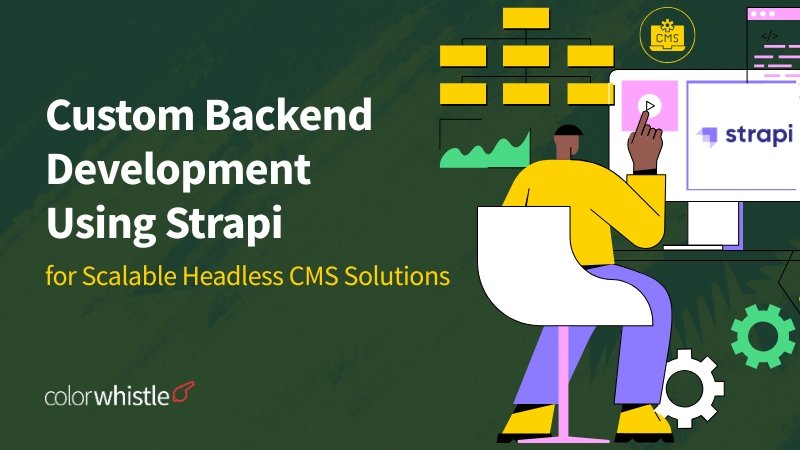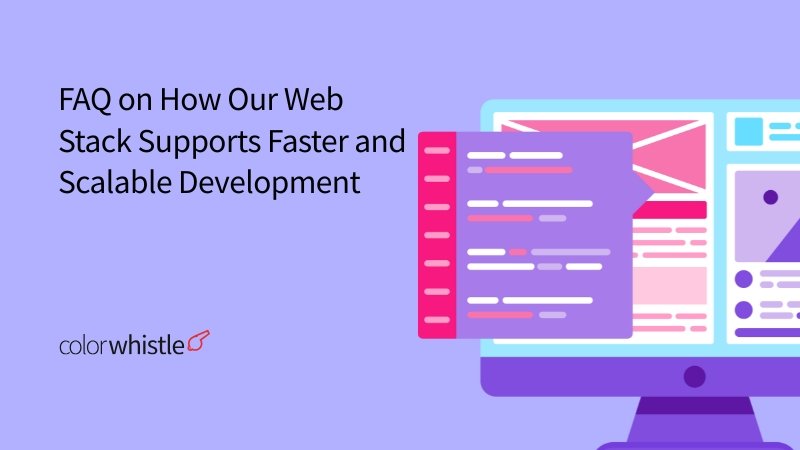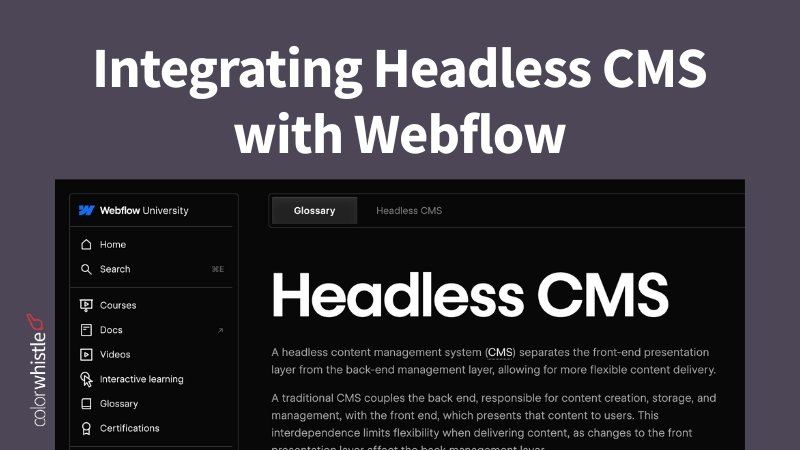Custom backend development is essential for advanced content management systems (CMS). It allows organizations to create tailored solutions that meet specific business needs. Unlike standard CMS platforms, custom backends give teams the power to design workflows, data models, and integrations that perfectly match their operational requirements. This level of customization is vital for businesses looking to be flexible and in control as digital experiences change.
Strapi has emerged as a next-generation headless CMS designed for this new paradigm. By decoupling the backend from the frontend, Strapi offers a robust framework for managing content via APIs, granting unprecedented flexibility in how and where content is delivered, whether to websites, mobile apps, or IoT devices.
Scalability is now a primary concern in modern content management. As organizations expand their digital presence across multiple channels, the ability to serve growing volumes of content without performance degradation becomes essential. Strapi’s architecture supports scalable headless CMS solutions by offering:
- Modular plugin support for extensibility
- Flexible database integrations
- Powerful user permissions and role management
Headless CMS Topics, especially those focusing on custom backend development with Strapi, are shaping the future of digital strategy for enterprises aiming to deliver seamless, omnichannel experiences while ensuring their infrastructure can scale alongside business growth.
Understanding Headless CMS and Its Advantages
The Headless CMS architecture redefines the way digital content is managed and delivered unlike traditional CMS platforms such as WordPress or Drupal, which tightly couple backend logic with frontend presentation, a headless CMS employs a decoupled architecture. In this model, content management occurs independently of how or where that content is rendered, offering businesses an agile approach to digital experience management.
Monolithic (Traditional) CMS, Headless (Decoupled) CMS, Backend and frontend are interconnected. Any change in backend structure often requires adjustments on the frontend, leading to rigid development cycles.
Content storage and management exist separately from content presentation. The backend exposes content via APIs, enabling any frontend technology to fetch and display data.
Headless CMS Benefits
Flexibility & Customization: Developers gain full freedom to design experiences using their preferred tools and frameworks. This flexibility supports headless CMS customization across diverse use cases.
Frontend Freedom: Teams can rapidly build interfaces for web, mobile, IoT devices, or digital kiosks. The decoupled backend ensures that one source of truth powers every platform.
Omnichannel Content Delivery: A single API-first backend allows simultaneous delivery of consistent content across multiple channels,websites, native apps, smart devices without duplication or silos.
API-First Approach: RESTful & GraphQL Integration
APIs form the core of headless CMS solutions:
RESTful APIs and GraphQL endpoints enable seamless communication between the backend and any client app.
Key advantages include:
- Programmatic access to structured content for custom frontend consumption
- Efficient aggregation of data from multiple sources via GraphQL queries
- Easy integration with third-party services or microservices architectures
The API-first approach future-proofs digital ecosystems by supporting emerging technologies and new touchpoints without major architectural overhauls. This ensures organizations can scale quickly while maintaining optimal performance and cohesive user experiences across platforms.
For those interested in real-world applications of this technology, there are several headless CMS case studies that showcase successful implementations and the resulting enhancements in performance, scalability, and flexibility.
Also Read
Why Choose Strapi for Custom Backend Development
Strapi stands out among headless CMS solutions through its robust open-source foundation and active developer community. As an open-source CMS, Strapi’s codebase is fully transparent and accessible, empowering teams to audit, modify, and extend the platform without vendor lock-in. This transparency accelerates innovation and fosters rapid troubleshooting, thanks to a global network of contributors who continuously enhance core features and security.
Key Strapi Features Driving Customization
1. Plugin Architecture
Strapi development benefits greatly from its modular plugin system. Developers can easily build or integrate plugins to address unique business requirements, ranging from advanced workflow automations to third-party service integrations. The flexible plugin ecosystem also allows rapid adaptation as content needs evolve.
2. Multilingual Capabilities
Modern businesses frequently require multilingual support for diverse audiences. Strapi’s internationalization (i18n) features enable seamless management of multilingual content within a single backend, ensuring a consistent user experience across geographies.
3. Customization Capabilities
Unlike many out-of-the-box CMS products, Strapi empowers backend teams with granular control over data models, user permissions, and API endpoints. This level of customization supports domain-specific content structures and business logic, making it ideal for projects demanding tailored backend workflows or data governance policies.
Security Compliance and Data Privacy
Meeting enterprise security standards is non-negotiable in scalable content platforms. Strapi addresses critical compliance requirements:
SOC 2 Compliance: Organizations can confidently deploy Strapi in environments where stringent data handling and auditing are required.
GDPR Readiness: Built-in tools facilitate user consent management, data anonymization, and regulatory reporting key mandates for businesses operating in jurisdictions with strict privacy laws.
“By leveraging an open-source CMS like Strapi, organizations gain both agility in development and peace of mind regarding compliance.”
Open collaboration fosters continuous innovation while maintaining a strong focus on best practices for security and scalability. This sets the stage for leveraging Strapi’s advanced features to architect performant, scalable backends across a wide spectrum of use cases.
Core Features That Make Strapi Ideal for Scalable Solutions
Strapi stands out in the headless CMS landscape thanks to its robust support for diverse database engines and its commitment to scalability. Businesses can select from multiple database options PostgreSQL, MySQL, MongoDB, and SQLite ensuring optimized performance tailored to their specific workload requirements. This flexibility is critical for projects that expect variable traffic patterns or need to scale dynamically as content demands evolve.
Key features contributing to Strapi’s scalability include:
1. Multi-Database Compatibility
PostgreSQL delivers advanced query optimization and high concurrency, making it suitable for enterprise-scale deployments.
MySQL offers reliability and widespread adoption, supporting high-traffic scenarios common in ecommerce and publishing.
MongoDB introduces schema-less architecture, ideal for rapidly changing content structures or projects handling unstructured data.
SQLite provides lightweight storage for development, prototyping, or smaller-scale applications.
2. Horizontal and Vertical Scaling
Strapi enables horizontal scaling by facilitating stateless application deployment across multiple servers. Vertical scaling is supported through efficient resource utilization and customizable caching layers.
3. Database-Agnostic Migration
Migrating between databases with minimal friction allows organizations to future-proof their tech stack as scalability needs shift.
These features position Strapi as a strong solution for any headless CMS project requiring robust database support and the ability to grow seamlessly alongside business objectives. The system’s architecture accommodates spikes in content volume and user activity without compromising stability or performance.
Industry Use Cases Demonstrating Strapi’s Versatility
Strapi’s flexibility and scalability make it an excellent choice for various industry applications, from dynamic websites to complex ecommerce platforms and mobile apps. Here are some examples:
Ecommerce Platforms
Fashion Retailer: A popular fashion retailer leverages Strapi to manage their extensive product catalog, integrate with payment gateways, and provide personalized shopping experiences. The headless CMS structure allows them to push updates in real-time across their web and mobile interfaces.
Marketplace Solutions: Multi-vendor marketplaces use Strapi to handle diverse vendor data, manage user profiles, and ensure seamless transactions. With its multi-database support, these platforms can scale effortlessly as the number of users and transactions grows.
Mobile Applications
Content Delivery Apps: News and media companies use Strapi to deliver content across multiple channels. By using APIs, they can ensure consistent content delivery on mobile apps, websites, and even smart devices.
Educational Apps: Online learning platforms utilize Strapi to manage course materials, student data, and interactive content. The flexibility of Strapi allows these apps to offer a tailored learning experience that adapts to different educational needs.
Dynamic Websites
Corporate Websites: Businesses of all sizes use Strapi to create dynamic corporate websites that require frequent updates and high levels of customization. The headless architecture ensures that frontend developers have complete freedom in designing user interfaces.
Portfolios and Blogs: Freelancers and bloggers benefit from using Strapi by managing their content efficiently while focusing on creative frontend designs. The ability to integrate with various frontend technologies allows for unique and engaging presentations.
These examples illustrate how Strapi’s headless CMS capabilities provide versatile solutions across different industries by offering robust backend management while enabling seamless frontend integration through APIs.
Custom Backend Development Best Practices with Strapi
Building a scalable and maintainable backend with Strapi involves a strategic approach to plugin development and API design. Plugins in Strapi serve as modular enhancements, allowing teams to encapsulate new features or integrate third-party services without touching the core codebase. Custom plugins can address unique business workflows, automate routine operations, or introduce advanced capabilities such as custom authentication providers or workflow engines.
Key considerations for designing custom plugins in Strapi:
- Clear Separation of Concerns: Each plugin should serve a single responsibility, such as handling payment gateways, analytics integration, or user management, to ensure easier maintenance and reusability.
- Consistent Naming Conventions: Adopt standardized naming for controllers, services, and routes within plugins for better readability and collaboration.
- Plugin Configuration: Leverage Strapi’s configuration API to expose customizable options via the admin panel, empowering non-developers to fine-tune plugin behavior.
API design best practices are equally critical. Strapi enables RESTful and GraphQL APIs out of the box. Optimizing these APIs means:
- Defining clear data models that reflect business logic while avoiding unnecessary complexity.
- Documenting endpoints thoroughly using OpenAPI/Swagger or integrated tools so frontend teams can integrate efficiently.
- Implementing role-based access control at the API level to safeguard sensitive operations and data.
By focusing on modular plugin architecture and robust API design principles, teams unlock both extensibility and long-term scalability in their Strapi-driven solutions.
Integrating Modern Frontend Frameworks with Strapi
Strapi’s Decoupled Backend
Strapi’s headless CMS architecture is designed with a decoupled backend, allowing seamless integration with modern frontend frameworks. This separation of concerns ensures that developers have the flexibility to choose their preferred tools for building the user interface, without being constrained by backend technologies.
Support for Popular Frontend Frameworks
Strapi supports integration with several popular frontend frameworks, including:
- React
- Vue.js
- Angular
This support enables developers to leverage the strengths of these frameworks while utilizing Strapi’s robust backend features.
Benefits of Choosing Preferred Frontend Technologies
- Enhanced Developer Experience: Developers can use familiar tools and workflows, improving productivity and satisfaction.
- Flexible Tech Stack: Teams can mix and match different technologies according to project requirements, ensuring optimal performance and maintainability.
- Scalability: Decoupled architecture allows for independent scaling of frontend and backend components, accommodating growing content and user demands.
- Performance Optimization: Ability to optimize frontend performance using specific techniques suitable for chosen frameworks.
- Omnichannel Delivery: Content can be delivered across various platforms and devices, ensuring a consistent user experience.
Example: React Integration
Integrating React with Strapi involves fetching data from Strapi’s APIs (RESTful or GraphQL) and managing it within React components. This approach provides:
- Dynamic Rendering: React’s virtual DOM allows for efficient updates and rendering of dynamic content fetched from Strapi.
- Component-Based Architecture: Reusable components simplify the development process and enhance code maintainability.
Example: Vue.js Frontend
Vue.js works seamlessly with Strapi through similar API integrations, offering:
- Reactive Data Binding: Vue’s reactivity system ensures that any changes in data from Strapi are automatically reflected in the UI.
- Single File Components: Organizing templates, scripts, and styles in a single file enhances code organization and readability.
Example: Angular Integration
Angular’s integration with Strapi provides:
- Robust Framework Features: Angular’s built-in features, such as dependency injection and form handling, complement Strapi’s API-driven content management.
- TypeScript Support: Angular’s use of TypeScript adds type safety and advanced tooling capabilities when working with data from Strapi.
By supporting these leading frontend frameworks, Strapi empowers developers to create highly performant, scalable, and maintainable applications tailored to their specific needs.
Latest Trends in Headless CMS Development Using Strapi
AI Integration in CMS: Transforming the Content Lifecycle
Strapi’s flexible architecture has made it a leader among headless CMS platforms that are incorporating artificial intelligence. The need for highly personalized content experiences and decisions based on data has led to an increased use of AI in digital content workflows.
Personalized User Experiences with AI
AI integration in CMS allows Strapi-powered platforms to understand how users behave, divide audiences into segments, and deliver personalized content automatically. Here are some examples:
- Recommendation engines can be connected via APIs to suggest articles, products, or media tailored to each visitor’s profile.
- Dynamic page assembly becomes possible by using machine learning models that adjust layouts and featured content based on real-time engagement metrics.
AI-Driven Content Analytics for Engagement Optimization
Content managers are using AI-powered analytics tools within Strapi to:
- Monitor how users engage with different types of content across various channels.
- Generate actionable insights, such as identifying underperforming assets or determining the best times to publish, using predictive analytics.
- Integrate third-party analytics platforms or create custom dashboards using Strapi’s plugin system for a deeper understanding of audience trends.
This data-focused approach enables editorial teams to make improvements more quickly and get a higher return on investment from their content initiatives.
Automated Content Tagging and Discoverability
In large-scale publishing environments, manual tagging can slow down the process. Machine learning models, which are integrated directly into the Strapi backend, now automate:
- Entity extraction: Identifying people, places, topics, and keywords within body text or multimedia uploads.
- Consistent metadata assignment, which improves search accuracy and supports advanced filtering on frontend applications.
- Content clustering for better management of categories,allowing users to find related materials seamlessly across channels.
By making discovery and classification easier, automated tagging boosts both editorial efficiency and satisfaction for end-users.
As these trends continue to grow, organizations are finding new ways to benefit from their CMS investments while meeting the ever-changing expectations of their audience.
Deployment Options and Maintenance Strategies for Scalable Solutions
Strapi’s deployment flexibility empowers organizations to align their CMS infrastructure with specific security, compliance, and scalability requirements. Businesses can choose between cloud hosting Strapi on providers like AWS, Azure, Google Cloud Platform, or DigitalOcean, or opt for on-premises deployment for maximum control over data and environments.
1. Cloud Hosting Strapi:
Advantages: Automatic scaling, managed backups, high availability, and rapid provisioning.
Best suited for: Companies seeking elastic resources and minimal infrastructure management overhead.
2. On-Premises Deployment:
Advantages: Enhanced data privacy, compliance with strict regulatory standards (e.g., healthcare or financial sectors), and deep integration with internal IT systems.
Best suited for: Enterprises with stringent data governance policies.
Maintaining a scalable Strapi solution goes beyond the initial deployment. Regular maintenance including updates to Strapi core, plugins, and dependencies is critical to patch security vulnerabilities, introduce performance improvements, and leverage new features. Implementing practices similar to WordPress Maintenance Mode, such as scheduling downtime during updates to avoid user disruption, can be beneficial. Automated CI/CD pipelines can streamline update rollouts while minimizing downtime. Proactive monitoring of application health using tools such as Prometheus or Datadog ensures rapid identification of bottlenecks before they impact user experience.
A robust maintenance strategy combined with flexible deployment options supports long-term scalability and reliability as content demands evolve. This foundation enables both developers and content managers to focus on innovation rather than firefighting operational issues.
Also Read
Target Audience Considerations for Implementing Strapi Solutions
Web Developers’ Needs
Strapi’s flexibility and customization capabilities make it an ideal choice for web developers seeking scalable backend solutions. Key benefits include:
- Customizable Backend: Developers can tailor the backend to meet specific project requirements through custom plugins and extensions.
- API-first Approach: Strapi supports RESTful and GraphQL APIs, enabling seamless integration with various frontend technologies.
- Multilingual Support: The ability to create multilingual setups ensures that content can reach a global audience.
- Robust Security: Compliance with standards such as SOC 2 and GDPR ensures data security and privacy.
Content Managers’ Perspective
Content managers benefit from Strapi’s ability to manage scalable systems efficiently:
- User-Friendly Interface: An intuitive admin panel simplifies content creation, editing, and organization without developer intervention.
- Omnichannel Delivery: Content managers can distribute content across multiple platforms, ensuring consistent messaging and branding.
- Role-Based Access Control (RBAC): Fine-grained permissions facilitate collaborative workflows while maintaining control over who can access what content.
- Efficient Workflows: Customizable workflows streamline content publishing processes, reducing time-to-market for new content.
Strapi addresses the distinct needs of both web developers and content managers, making it a versatile solution for businesses of all sizes, from startups to large enterprises.
Startups and Growing Businesses
Startups and growing businesses will find Strapi particularly advantageous due to its:
Scalability: As the business grows, Strapi scales effortlessly to accommodate increasing content needs.
Cost-Efficiency: Being open-source, Strapi offers a cost-effective solution without compromising on features or performance.
Community Support: A vibrant developer community provides extensive resources, plugins, and support for continuous improvement.
Strapi’s adaptability ensures that it remains a valuable asset throughout different stages of business growth.
Conclusion
Strapi stands out as a top choice for custom backend development due to its powerful features and flexibility. Here are the main reasons why:
- Scalability: Strapi supports multiple databases such as PostgreSQL, MySQL, MongoDB, and SQLite, ensuring optimal performance and scalability tailored to your needs.
- Flexibility: Developers can customize backends with plugins and multilingual setups, allowing them to tailor the CMS to specific business requirements.
- Security: Strapi complies with SOC 2 and GDPR standards, providing peace of mind when handling sensitive data.
Strapi’s open-source nature also fosters a thriving developer community, offering extensive support and continuous improvements. By adopting modern headless CMS architectures with Strapi, businesses can future-proof their content strategies and ensure seamless integration across various platforms.
For those considering a shift towards more advanced web solutions or seeking comprehensive WordPress development services, our team at ColorWhistle is equipped to provide expert assistance. We also offer SEO services that can significantly enhance your online visibility. If you’re contemplating a website revamp, our website redesign services focus on delivering performance-based solutions with an emphasis on user experience.
To explore more about our services or get in touch for AI integration solutions, please visit our Contact Us page.
FAQs (Frequently Asked Questions)
What is a headless CMS, and how does it differ from traditional CMS systems?
A headless CMS is a content management system that decouples the backend content repository from the frontend presentation layer. Unlike traditional CMS platforms, which combine content management with predefined frontend templates, headless CMS offers flexibility by providing content via APIs (RESTful or GraphQL) enabling seamless integration with any frontend technology for omnichannel content delivery.
Why is Strapi considered an ideal solution for custom backend development in a headless CMS?
Strapi is an open-source, next-generation headless CMS known for its extensive customization capabilities. It allows developers to tailor backend functionalities through plugins and multilingual setups, supports multiple databases like PostgreSQL, MySQL, MongoDB, and SQLite for scalability, and complies with security standards such as SOC 2 and GDPR, making it a robust choice for scalable custom backend development.
How does Strapi support scalability in modern content management solutions?
Strapi supports scalability by offering multi-database compatibility (including PostgreSQL, MySQL, MongoDB, and SQLite), enabling optimized performance based on specific project needs. Its flexible architecture allows for easy expansion and maintenance, whether deployed on cloud platforms or on-premises servers, ensuring that growing businesses can manage increasing content demands efficiently.
What are the benefits of integrating modern frontend frameworks like React or Vue.js with Strapi?
Strapi’s decoupled backend architecture seamlessly integrates with popular frontend frameworks such as React, Vue.js, and Angular. This integration empowers developers to choose their preferred technologies while benefiting from flexible API-first content delivery. It enhances frontend freedom, improves user experience, and facilitates building dynamic web applications or mobile apps with efficient content management.
What best practices should be followed when developing custom plugins and designing APIs in Strapi?
When developing custom plugins in Strapi, it’s important to align functionality with specific business requirements to extend core capabilities effectively. API design best practices include ensuring RESTful or GraphQL endpoints are well-structured, secure, and optimized for performance. Regular maintenance and updates help maintain stability and scalability of the custom backend solutions.
How is AI integration shaping the future of headless CMS development with Strapi?
AI integration within Strapi enables personalized user experiences through intelligent content analytics and automated tagging using machine learning. These advancements improve content discoverability and engagement by optimizing workflows within the CMS. Incorporating AI-driven features represents a significant trend in modern headless CMS development aimed at enhancing efficiency and delivering tailored digital experiences.
What’s Next?
Now that you’ve had the chance to explore our blog, it’s time to take the next step and see what opportunities await!





